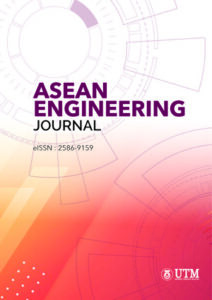TECHNO-ECONOMIC EVALUATION OF NITROCELLULOSE PRODUCTION FROM PALM OIL EMPTY FRUIT BUNCHES
DOI:
https://doi.org/10.11113/aej.v11.18037Keywords:
Economic evaluation, Nitrocellulose, Palm oilAbstract
Nitrocellulose is a cellulose derivative that has many potential applications. Nitrocellulose can be
made through nitration reactions by reacting cellulose and nitric acid at low temperatures. Cellulose can be obtained from lignocellulose biomass such as palm oil empty fruit bunches (POEFBs). In this study, techno-economic evaluation of nitrocellulose production from POEFBs was investigated with various types of alkaline and acid pretreatments. Pretreatment of POEFBs with alkaline and acid was used to purify cellulose fraction as raw material for nitrocellulose. The combination process of POEFBs pretreatment with alkaline and acid can be classified into 4 process routes such as ammonium hydroxide and sulfuric acid pretreatment (Route-1), ammonium hydroxide and acetic acid pretreatment (Route-2), sodium hydroxide and sulfuric acid pretreatment (Route-3), and sodium hydroxide and acetic acid pretreatment (Route-4). The results showed that ammonium hydroxide and sulfuric acid pretreatment (Route-1) was the most profitable route to produce nitrocellulose. Economic parameter values such as return of investment (ROI), payback period (PBP), net present value (NPV) and internal rate of return (IRR) from ammonium hydroxide and sulfuric acid pretreatment (Route-1) were 11.49%, 5.85 years, US$ 442,427 and 13.35%.
















